Symbol groups have been on a major recruitment drive for years. With recession, has the conversion rate intensified, and which group is doing the most to take advantage? Peter Cripps reports
A year ago, Costcutter boss Colin Graves predicted symbol groups would grow as independents flocked to their shelter.
He has been proved right. Symbol groups have continued their march with a 7.0% rise in store numbers over the past year, according to figures compiled by The Grocer. This is more than double the recruitment rate in previous years between 2003 and 2008 the main groups grew the number of stores operating under their fascias from 12,742 to 14,630, an average increase of 2.8% a year, according to Grocery Retail Structure figures. Why has this happened, who's gained most and how long can the expansion continue?
The case for an independent to adopt a symbol has never been stronger. The convenience market has become increasingly competitive thanks to the growing presence of Tesco and Sainsbury's and a revitalised The Co-operative Group. These mults' modern stores with strong fresh and chilled ranges are helping drive up standards in the c-store sector. As a result, indies are having to work ever harder to compete on pricing, ranges and store standards.
Faced with competition from major brands such as these, more and more independents are choosing to have a well-known brand name above their door.
Many fascias have received makeovers in recent months, with P&H-owned Mace, Booker's Premier and Nisa all relaunched as the race to sign up strong indies becomes more hard-fought. The symbol groups are also improving their marketing, with Costcutter and Spar having spent big on TV ads and Nisa-Today's following suit.
But it is not just the brand value offered by symbols that is attracting retailers. Just as indies come under more pressure to raise store standards, the banks have reined in lending, making it harder for independents to raise the cash they need to make improvements to stores. This is one key way in which a symbol group can help.
"We have money to co-invest in other people's businesses," says John Pattison, MD of south west Spar wholesaler Appleby Westward Group. "Add this to the strength of the brand and the support we offer retailers through our staff on the ground, and it gives us a compelling package."
Another huge advantage is credit. Typically, symbols will extend credit to their members, a service they would not often have at C&Cs. This has become all the more important in recent months as indies' working capital becomes squeezed.
The prices that can be achieved through joining a symbol are another important attraction. Premier has shown 9% growth in store numbers and has set out its stall to become the biggest c-store operator over the next three years. Steve Fox, sales director retail, is confident that, thanks to aggressive pricing, Premier can become a bigger and better brand than Spar.
"With our cost model we don't have to charge membership fees, so our cost of goods would be the lowest in the marketplace. Our cost of goods is 5% to 6% cheaper than our rivals. Add to that the discounts they can get through our Spend & Save package and we can be 10% cheaper."
Like all the other symbol group offers, Premier believes a strong promotional offer is key in the current climate.
Symbol groups are also upping their games when it comes to other benefits. Spar wholesaler James Hall & Co is improving its food-to-go and chilled offerings, with next-day delivery on its sandwiches, which it now makes at its own factory.
There has also been an increase in the number of field sales reps who work with staff to help them get their offer right. Select & Save has taken on a new team of sales reps as it aims to double its store numbers over the next three years, after its store numbers fell 14% over the past year.
EPoS systems provided by symbols can also help save retailers hours by helping them manage their stock and ordering, ensuring good availability. Costcutter recently relaunched its C-Pos system, which it claims has already been adopted by hundreds of stores.
Symbols are constantly updating their planograms and advice about ranging to help their retailers. Landmark's model, which specialises in planograms, advice and training to retailers, has worked particularly well, and store numbers in its fascia scheme have grown 24%.
It is due to launch the next phase of its development, focusing on availability, promotions, and NPD. However, following the defection of Landmark retail controller Raj Krishan to the role of retail development director at the Today's Group, it is expected that Today's, the fascia of the Today's Group, which currently has 77 stores, will also grow rapidly in coming months.
One of the biggest barriers for independents adopting a fascia is that they consider they will be shackled into buying the goods prescribed by the group. Bestway, however, claims it takes a relaxed attitude as long as retailers maintain a core spend through them.
James Hall, controller of Best-One, promises: "We like to think retailers join us because of our 'working partnership' approach rather than the 'dictatorial' style I often hear quoted from newcomers to other symbols. We recognise retailers want to do a certain amount of buying outside the Best-One service, and have no problems with that. But we expect all members to take part in being a real member."
It is Best-One's understanding attitude towards its retailers that has seen it add 70 stores over the past year and its turnover increase by more than 20%.
Graves claims to be equally relaxed: "With retailers shopping around for the best package, our flexibility is a key point of difference over our rivals and one reason we expect to attract more accounts."
But it has not all been easy for symbol groups over the past year. There have also been insolvencies, even for retailers that are part of a symbol. Graves blames this primarily on lack of support from banks.
Recruiting genuine independents has also proved difficult because many of these stores would need too much investment to bring them up to the standard required. "I could have 5,000 stores by now if I wanted to," says Graves. "But it's about signing up the right stores, not just any stores."
As a result, many stores have flitted from one symbol group to another as part of what Pattison refers to as a "merry-go-round".
Michaela Honeywood, head of symbol at P&H, says: "As part of a recruitment drive we started in October we have found it's an easier sell to a symbol operator because they understand fees and how the system works. Indies are approaching us more than ever because they want to talk to us and know we can help them."
A year ago, Costcutter boss Colin Graves predicted symbol groups would grow as independents flocked to their shelter.
He has been proved right. Symbol groups have continued their march with a 7.0% rise in store numbers over the past year, according to figures compiled by The Grocer. This is more than double the recruitment rate in previous years between 2003 and 2008 the main groups grew the number of stores operating under their fascias from 12,742 to 14,630, an average increase of 2.8% a year, according to Grocery Retail Structure figures. Why has this happened, who's gained most and how long can the expansion continue?
The case for an independent to adopt a symbol has never been stronger. The convenience market has become increasingly competitive thanks to the growing presence of Tesco and Sainsbury's and a revitalised The Co-operative Group. These mults' modern stores with strong fresh and chilled ranges are helping drive up standards in the c-store sector. As a result, indies are having to work ever harder to compete on pricing, ranges and store standards.
Faced with competition from major brands such as these, more and more independents are choosing to have a well-known brand name above their door.
Many fascias have received makeovers in recent months, with P&H-owned Mace, Booker's Premier and Nisa all relaunched as the race to sign up strong indies becomes more hard-fought. The symbol groups are also improving their marketing, with Costcutter and Spar having spent big on TV ads and Nisa-Today's following suit.
But it is not just the brand value offered by symbols that is attracting retailers. Just as indies come under more pressure to raise store standards, the banks have reined in lending, making it harder for independents to raise the cash they need to make improvements to stores. This is one key way in which a symbol group can help.
"We have money to co-invest in other people's businesses," says John Pattison, MD of south west Spar wholesaler Appleby Westward Group. "Add this to the strength of the brand and the support we offer retailers through our staff on the ground, and it gives us a compelling package."
Another huge advantage is credit. Typically, symbols will extend credit to their members, a service they would not often have at C&Cs. This has become all the more important in recent months as indies' working capital becomes squeezed.
The prices that can be achieved through joining a symbol are another important attraction. Premier has shown 9% growth in store numbers and has set out its stall to become the biggest c-store operator over the next three years. Steve Fox, sales director retail, is confident that, thanks to aggressive pricing, Premier can become a bigger and better brand than Spar.
"With our cost model we don't have to charge membership fees, so our cost of goods would be the lowest in the marketplace. Our cost of goods is 5% to 6% cheaper than our rivals. Add to that the discounts they can get through our Spend & Save package and we can be 10% cheaper."
Like all the other symbol group offers, Premier believes a strong promotional offer is key in the current climate.
Symbol groups are also upping their games when it comes to other benefits. Spar wholesaler James Hall & Co is improving its food-to-go and chilled offerings, with next-day delivery on its sandwiches, which it now makes at its own factory.
There has also been an increase in the number of field sales reps who work with staff to help them get their offer right. Select & Save has taken on a new team of sales reps as it aims to double its store numbers over the next three years, after its store numbers fell 14% over the past year.
EPoS systems provided by symbols can also help save retailers hours by helping them manage their stock and ordering, ensuring good availability. Costcutter recently relaunched its C-Pos system, which it claims has already been adopted by hundreds of stores.
Symbols are constantly updating their planograms and advice about ranging to help their retailers. Landmark's model, which specialises in planograms, advice and training to retailers, has worked particularly well, and store numbers in its fascia scheme have grown 24%.
It is due to launch the next phase of its development, focusing on availability, promotions, and NPD. However, following the defection of Landmark retail controller Raj Krishan to the role of retail development director at the Today's Group, it is expected that Today's, the fascia of the Today's Group, which currently has 77 stores, will also grow rapidly in coming months.
One of the biggest barriers for independents adopting a fascia is that they consider they will be shackled into buying the goods prescribed by the group. Bestway, however, claims it takes a relaxed attitude as long as retailers maintain a core spend through them.
James Hall, controller of Best-One, promises: "We like to think retailers join us because of our 'working partnership' approach rather than the 'dictatorial' style I often hear quoted from newcomers to other symbols. We recognise retailers want to do a certain amount of buying outside the Best-One service, and have no problems with that. But we expect all members to take part in being a real member."
It is Best-One's understanding attitude towards its retailers that has seen it add 70 stores over the past year and its turnover increase by more than 20%.
Graves claims to be equally relaxed: "With retailers shopping around for the best package, our flexibility is a key point of difference over our rivals and one reason we expect to attract more accounts."
But it has not all been easy for symbol groups over the past year. There have also been insolvencies, even for retailers that are part of a symbol. Graves blames this primarily on lack of support from banks.
Recruiting genuine independents has also proved difficult because many of these stores would need too much investment to bring them up to the standard required. "I could have 5,000 stores by now if I wanted to," says Graves. "But it's about signing up the right stores, not just any stores."
As a result, many stores have flitted from one symbol group to another as part of what Pattison refers to as a "merry-go-round".
Michaela Honeywood, head of symbol at P&H, says: "As part of a recruitment drive we started in October we have found it's an easier sell to a symbol operator because they understand fees and how the system works. Indies are approaching us more than ever because they want to talk to us and know we can help them."




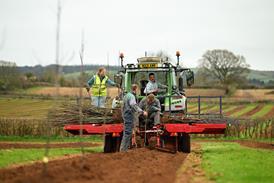


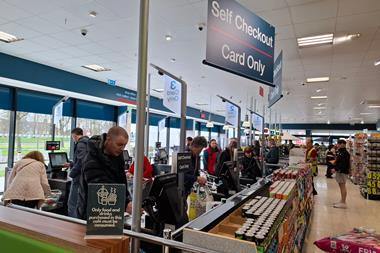
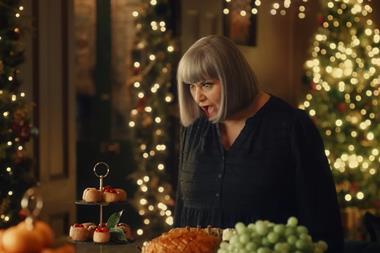


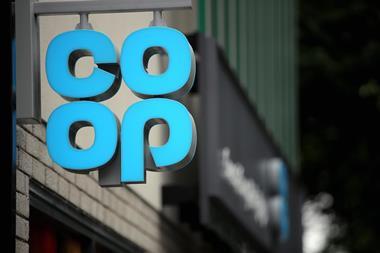
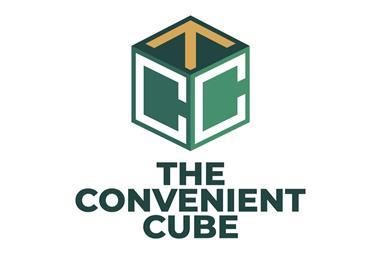
No comments yet